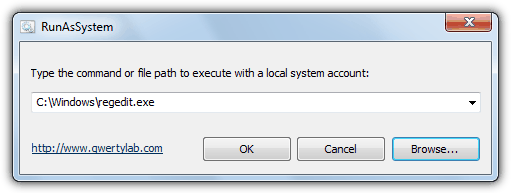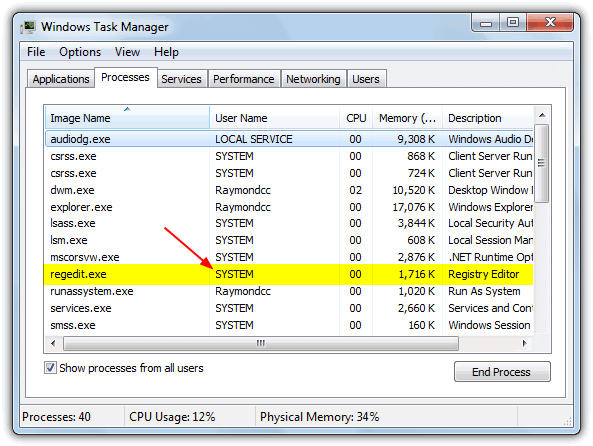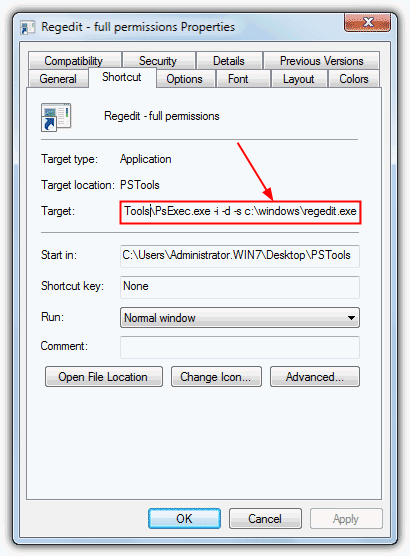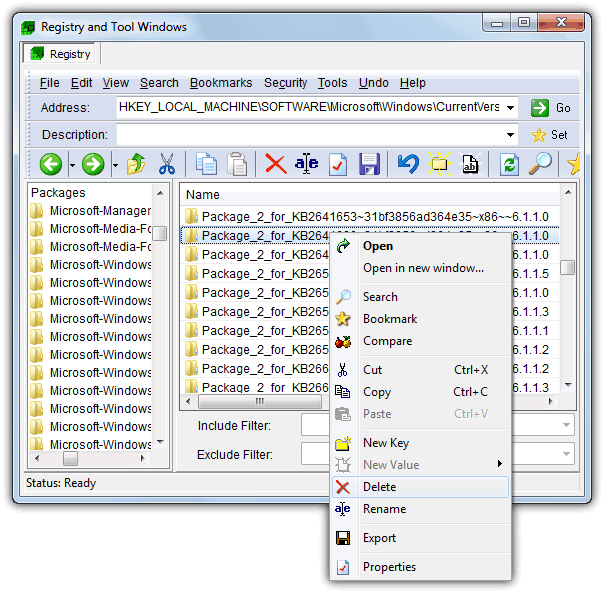5 Ways to Fix Error While Deleting Key

Most advanced users know all about it, but if you didn’t know what the Windows registry is, it’s a several megabyte database that stores most of the information for your Windows operating system. It contains thousands of configuration settings for Windows itself, third party software, hardware and preferences for the individual users on the computer. Editing the Windows registry can be dangerous if you don’t know what you’re doing because if you wrongly delete an important key, Windows might not be able to boot up the next time.
So no matter how confident and experienced you are, it’s always a sensible idea to be a little bit safer and make a backup of the registry keys that you intend to edit, or even better, make a complete backup of the whole registry as well just in case. If you’re trying to edit or delete keys from the registry to repair or recover from certain problems, you might find that some keys won’t let you do anything with them and you’ll get an error such as “Cannot delete xxxxx: Error while deleting key”. These keys are usually protected to stop accidental deletion and it’s important you have the correct key before trying to change it.

You could also be the administrator on the computer, but still can’t manipulate the required key, which might sound quite odd. Even though the administrator account has a great deal of control, there are other hidden accounts and levels on the system which have even greater access and therefore standard administrator privileges are not enough. To solve this problem, you have to force the registry to allow the logged on user full control of the subkeys. Below are several different ways of performing this operation to give you the required access.
1. Run Regedit using the RunAsSystem tool
As well as being able to take ownership of registry keys and setting the permissions manually, another thing you can do is run the Windows registry editor with highly elevated privileges. This can be achieved with the System account that is even more powerful than the administrator and therefore has more access to protected registry keys. This has the added bonus of allowing you to view the SAM and SECURITY registry keys which are otherwise hidden. A small portable tool called RunAsSystem is able to do this for any program you tell it to, here’s how.
1. Download RunAsSystem, extract and run it.
2. Click the Browse button and look for regedit.exe which is normally located in the Windows folder, or simply type regedit into the box.

3. Click OK which will open the Registry Editor. If you open up the Task Manager, and as you can see from the screenshot below, regedit.exe is now running under the SYSTEM account where it would normally run under the user’s standard account. You can delete several legacy keys without the “Error While Deleting Key” message.

RunAsSystem is also useful if you want to restore any registry keys that were deleted this way because importing the keys would produce a “Cannot import file.reg: Error accessing the registry” message from the standard admin/user account. The solution is to either run regedit as System, and import it from File -> Import, or run the .reg file using RunAsSystem.
2. Use the PsExec tool
The PsExec command line utility is part of the PSTools remote administration set of command line utilities from Sysinternals. Like the RunAsSystem tool, PsExec also allows you to see the SAM and SECURITY keys that are hidden under normal circumstances. It works in a similar way too by elevating the registry editor to run under the System account granting more control over the registry. You need to make sure you have administrator privileges in the first place for this to work.
1. Download and extract the PSTools.zip file from the Sysinternals website. Right click on the PsExec utility and click Create Shortcut (or Send to -> Desktop).
2. Right click on the shortcut -> Properties and add the following to the end of the line in the Target box:
{space}-i -d -s c:\windows\regedit.exe

3. Click OK and then double click the shortcut to launch Regedit under the System account. If you’re still unable to delete or edit the keys you want, try the next solution below.
3. Registrar Registry Manager
Registrar is a registry editing tool with several advanced features and is a lot more like a standard Windows Explorer interface with toolbar buttons for back, forward, cut, copy, paste etc. It also has advanced searching and comparing functions, bookmarking, a registry defragmenter and a backup and restore option. There are other features such as multi level undo and remote registry editing, but they along with several other features are only available in the Professional version which costs around $55.
Thankfully there is a free Home Edition that allows you to browse and edit the registry without any problems, the only downsides are the nag screen and not knowing some functions aren’t in the free version until you click on them. Like the tools above it also shows the usually hidden SAM and SECURITY keys, and while testing it was able to edit or delete a number of the registry keys that the tools above couldn’t. Keys you would normally have to edit the permissions manually to delete such as those that need removing to repair the Features window problem in Windows Vista or 7 are done so with the click of a button.

Usage is pretty much the same as regedit and you simply navigate your way to the required key and then right click on it or use the buttons in the toolbar to rename or delete etc. If manually editing registry permissions sounds to confusing, this might be your best option. Registrar can also be made portable by copying its folder from Program Files, and works on Windows XP up to Windows 8.
Download Registrar Registry Manager Home
If even these tools aren’t working for you, the next option will be to edit the permissions for the key manually using Regedit or simply use a low-level anti-rootkit tool. On page 2 we’ll show you how.





User forum
100 messages